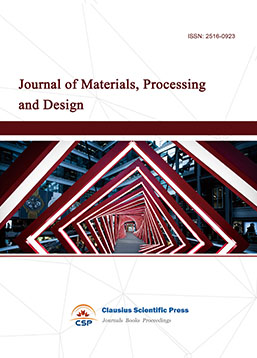Metal nanocatalysts confined within hydrophobic zeolite for selective hydrogenation of nitroaromatics
DOI: 10.23977/analc.2024.030104 | Downloads: 31 | Views: 1331
Author(s)
Zhongshan Zhao 1, Yue Sun 1, Tao Cai 1
Affiliation(s)
1 College of Chemistry and Chemical Engineering, Qingdao University, Qingdao, China
Corresponding Author
Yue SunABSTRACT
This study focuses on the encapsulation of palladium-based nanocatalysts within Silicalite-1 zeolite through in-situ synthesis, with an aim to enhance the selective hydrogenation of nitroaromatic compounds. By controlling the size of palladium metal nanoclusters to approximately 1nm and incorporating hydrophobic organic groups into the zeolite framework, we significantly improved the hydrogenation efficiency. The modification with hydrophobic groups, specifically methyl groups, not only augmented the hydrophobicity of the zeolite but also its catalytic performance, especially for Pd@S-1-CH3, in the hydrogenation of nitrobenzene, surpassing that of Pd@S-1. This modification was instrumental in achieving enhanced performance due to the improved mass transfer of reactants within the zeolite pores. The catalytic activity and stability of the modified catalysts were thoroughly investigated, with Pd@S-1-CH3 demonstrating considerable activity and selectivity across various nitrobenzene derivatives. Notably, after 10 reaction cycles, the catalyst maintained high conversion rates and selectivity for 4-fluoronitrobenzene, underlining its robustness. This research provides valuable insights into the design of highly efficient and stable nanocatalysts for the selective hydrogenation of nitroaromatic compounds, offering a promising approach for the synthesis of aromatic amines, crucial intermediates in the chemical industry.
KEYWORDS
Zeolite; Metal nanocatalysts; Limiting effect; Selective hydrogenation; Aromatic amineCITE THIS PAPER
Zhongshan Zhao, Yue Sun, Tao Cai, Metal nanocatalysts confined within hydrophobic zeolite for selective hydrogenation of nitroaromatics. Analytical Chemistry: A Journal (2024) Vol. 3: 20-25. DOI: http://dx.doi.org/10.23977/analc.2024.030104.
REFERENCES
[1] L. Zhang, J. Pan, Y. Long, J. Li, W. Li, S. Song, Z. Shi, H. Zhang, CeO2-Encapsulated Hollow Ag-Au Nanocage Hybrid Nanostructures as High-Performance Catalysts for Cascade Reactions, Small, 15 (2019) 1903182.
[2] J. Zhang, L. Wang, Y. Shao, Y. Wang, B.C. Gates, F.S. Xiao, A Pd@Zeolite Catalyst for Nitroarene Hydrogenation with High Product Selectivity by Sterically Controlled Adsorption in the Zeolite Micropores, Angewandte Chemie International Edition, 56 (2017) 9747-9751.
[3] J. Tang, P. Liu, X. Liu, L. Chen, H. Wen, Y. Zhou, J. Wang, In Situ Encapsulation of Pt Nanoparticles within Pure Silica TON Zeolites for Space-Confined Selective Hydrogenation, ACS Applied Materials & Interfaces, 12 (2020) 11522-11532.
[4] Y. Zhang, A. Li, M. Sajad, K. Fulajtárová, M. Mazur, M. Kubů, M. Shamzhy, M. Hronec, R. Bulánek, J. Čejka, Imidazolium-type ionic liquid-assisted formation of the MFI zeolite loaded with metal nanoparticles for hydrogenation reactions, Chemical Engineering Journal, 412 (2021) 128599.
[5] T.L. Cui, W.Y. Ke, W.B. Zhang, H.H. Wang, X.H. Li, J.S. Chen, Encapsulating Palladium Nanoparticles Inside Mesoporous MFI Zeolite Nanocrystals for Shape‐Selective Catalysis, Angewandte Chemie International Edition, 55 (2016) 9178-9182.
[6] Q.-L. Zhu, Q. Xu, Immobilization of Ultrafine Metal Nanoparticles to High-Surface-Area Materials and Their Catalytic Applications, Chem, 1 (2016) 220-245.
| Downloads: | 1401 |
|---|---|
| Visits: | 81361 |
Sponsors, Associates, and Links
-
Forging and Forming

-
Composites and Nano Engineering

-
Journal of Materials, Processing and Design

-
Metallic foams

-
Smart Structures, Materials and Systems

-
Chemistry and Physics of Polymers

-
Modern Physical Chemistry Research

-
Inorganic Chemistry: A Journal

-
Organic Chemistry: A Journal

-
Progress in Materials Chemistry and Physics

-
Transactions on Industrial Catalysis

-
Fuels and Combustion

-
Casting, Welding and Solidification

-
Journal of Membrane Technology

-
Journal of Heat Treatment and Surface Engineering

-
Trends in Biochemical Engineering

-
Ceramic and Glass Technology

-
Transactions on Metals and Alloys

-
High Performance Structures and Materials

-
Rheology Letters

-
Plasticity Frontiers

-
Corrosion and Wear of Materials

-
Fluids, Heat and Mass Transfer

-
International Journal of Geochemistry

-
Diamond and Carbon Materials

-
Advances in Magnetism and Magnetic Materials

-
Advances in Fuel Cell

-
Journal of Biomaterials and Biomechanics


 Download as PDF
Download as PDF